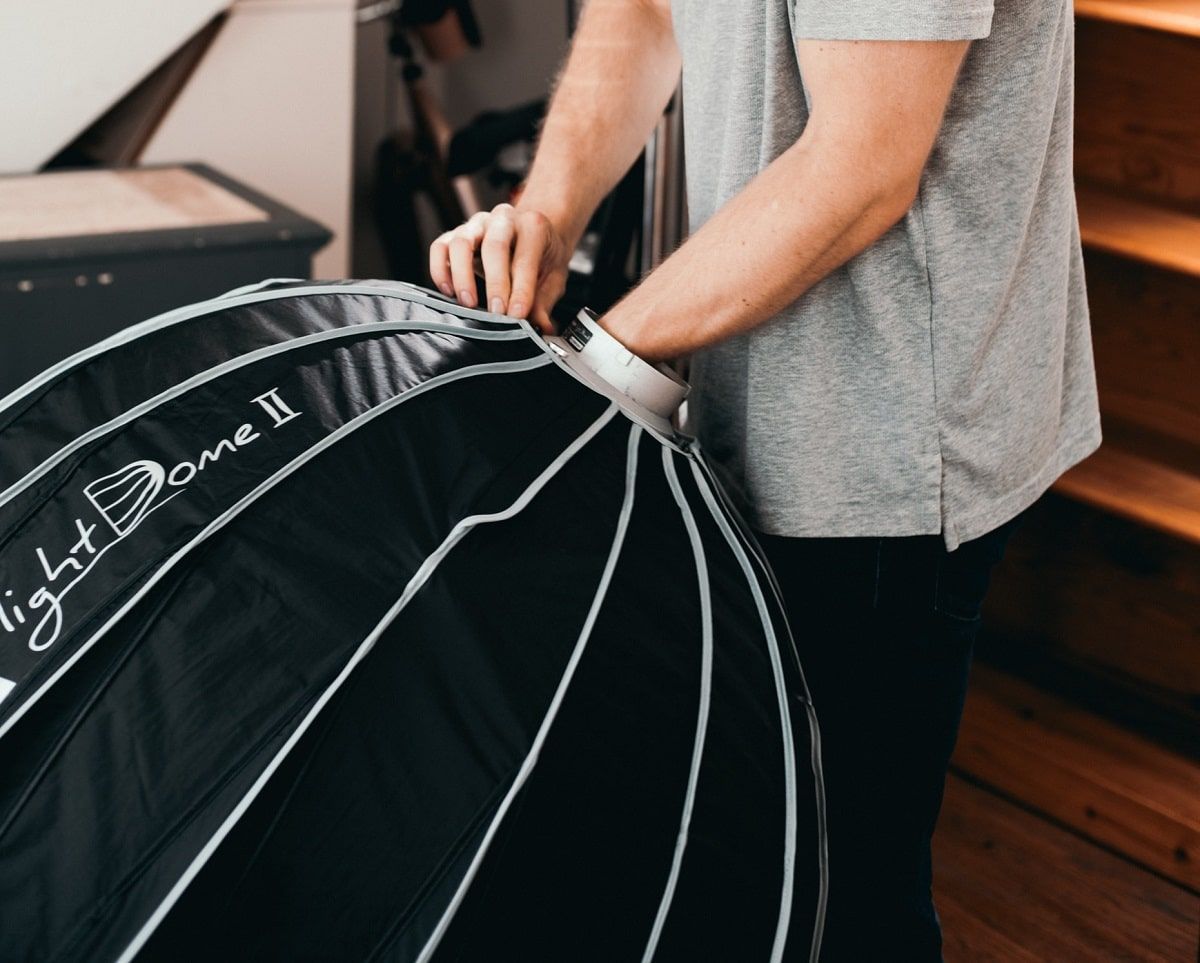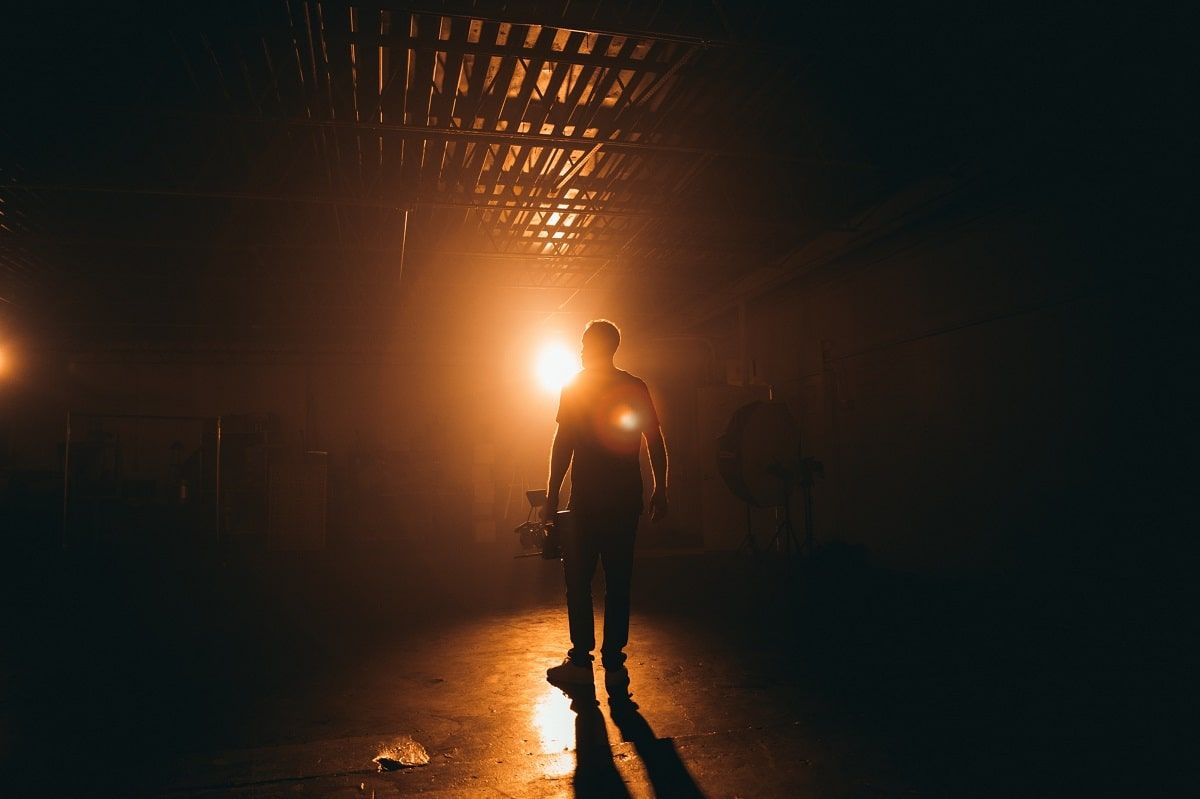Secrets of Lighting Faces in Film: Tips, Techniques & Examples
Rent film gear from local filmmakers.

Rent film gear from local filmmakers.
Knowing how to light faces in film is by far one of the most essential skills in filmmaking.
It may be daunting, but that's why I'm here to provide you with an easy breakdown of rules and guidelines for you to check out.
Why your key light is essential in face lighting
Lighting plays a vital role in manipulating the story's visual mood and atmosphere to convey meaning to the audience.
By literally illuminating the scene, the audience is invited on a journey - where to look, who to observe and why. It also gives the filmmaker control of how the audience perceives a character, simply by how they are lit.
Where do you start?
With a key light - the primary light source in a three-point lighting setup and, ultimately, the brightest one. It fulfils the purpose of lighting the subject's face.
Filmmakers will often position the key light to the side of the camera at a 45-degree angle and in front of the subject.
Variation in the direction of the key light will affect the subject's mood, dimension, and depth.
For example, high-key lighting will create softer shadows, lower contrasts, and a soothing atmosphere, while low-key lighting will do the opposite.
As a filmmaker, you are allowed to play around with the key light as much as you feel, illuminating your subject accordingly.

3 Setups for Lighting faces in film
Professional filmmakers have explored various setups for lighting faces. Let's delve into which lighting faces setup suits the best for your film.
Farside key
You can achieve farside key lighting by placing the key light to the side of the actor's face away from the camera.
Filmmakers use this setup around 70-80% of the time when wanting to light a subject's face as it is the easiest, most effective way of creating a cinematic effect.
Most importantly, this dramatic feel can be pretty intriguing and draws in the audience. It's a win-win situation.
Nearside key & bottom lighting
The near side key & bottom lighting setup requires a naked bulb in front of and below the actors.
So, you can imagine that shooting into the light source will be more challenging than using far side key lighting. The results are more rewarding, with fewer shadows and more exposure, and it's worth trying something different!
Top lighting
Using top lighting can be beneficial to stimulate a natural ambience whilst also creating mystery, darkness, and a dramatic aura. The setup requires a harsh light beam from directly above the subject, illuminating from top to bottom.

Common lighting patterns
Even within these setups, you can spice it up with distinct lighting patterns, including:
Split
- The pattern of split lighting comes from lighting half of the subject's face and leaving the other half in shadow
- Set up the key light at a 90-degree angle directly to the right or left side of the subject's face.
- The shot will have a unique, dramatic effect – exaggerating the subject's features.
Loop
- Use the key light to illuminate most of the face yet allow a minimal shadow to keep the definition strong.
- Move the key light around the subject until it reaches a 25-50-degree angle, either to the left or right of the face and then angled down to the subject's face.
- Many actors will prefer loop lighting to highlight their most attractive features on their preferred side of the face.
Rembrandt
- It's a similar technique of splitting the subject's face in half but with the variation of leaving a triangle-shaped light on the cheekbone and eye.
- Move the key light around the subject until the shadow of the nose is touching the shadow of the face. To ensure the triangle remains.
- This is the most dramatic effect, so make sure to use it wisely.
Butterfly
Place the light in front and above the subject's face to create a variation of shadows on the subject's face.
- Fun fact - the "butterfly" name comes from the shape of a butterfly that is formed under the nose.
- Move the key light in front of the subject in the same shooting direction, then raise the light until the butterfly effect appears.
Broad
- The side of the subject's face, which is looking toward the camera, is lit whilst the other side is turned away. As a result of a larger light area on the face, the shadowed side will look smaller.
- Place the key light in front of the subject and let them do the work.
- It produces a lighter mood due to the fewer shadows.

5 Tips for lighting faces in film
1 Let the environment guide your lighting setup
Having an awareness of your surroundings will make your decision on face lighting come quickly. Ask yourself what you want to say with the lighting, what meaning you want to convey and what mood or atmosphere you want to achieve, and this will guide you to choose the correct setup.
2 Pay attention to your shadows and use them actively
A filmmaker will have mixed emotions with shadows - they can either preserve or alter your goal in a shoot. For this very reason, you need to pay extra attention to details and how the shadow falls on the actor's face. You must use the shadows in your favour to achieve a soft or harsh mood.
3 The direction and brightness of your key light affects the mood
Lighting can make a scene feel optimistic, light, mysterious or even scary. It displays a range of emotions that will motivate the audience and keep them engaged with the film. As a filmmaker, you should experiment with the different lighting placements and trust that they fulfil your goal.
4 Mix colour temperature to create contrast and cinematic depth
Exploring the range of colour temperature will change the dynamics of the scene. Increasing the value of colour temperature will result in a warmer, more yellow screen which evokes a sense of comfort. You can achieve the opposite feeling by reducing the value of colour temperature, creating a blue screen and a colder effect. Take this into account for cinematic depth.
5 Use reflectors, diffusers, flags to control light spill
You must have reflectors, diffusers, flags in your bag of tricks. They are essential in lighting faces in film, as they reflect, spread or make the light softer onto the subject's face. These accessories can be of different materials, shapes and forms but essentially control light spill.
What's next? Learn all the essential film lighting techniques
Learning how to light faces in film is a vital lighting technique, but far from the only one.
Discover all the various film lighting techniques and learn how you can achieve each of them.
About the instructor
Andrey Beresnev
Cinematographer
London, United Kingdom
Andrey Beresnev is a Director of Photography specializing in cinematic lighting. He’s also the author of the Andbery YouTube Chanel. He’s been working in the industry since 2013 in both Russia and the UK.
Lighting Faces FAQ
How do you light someone's face in film?
Position the key light in front of the person's face and apply different setups to include variation.
What are the different lighting positions?
Farside key, Nearside key and bottom lighting, and Top lighting






















